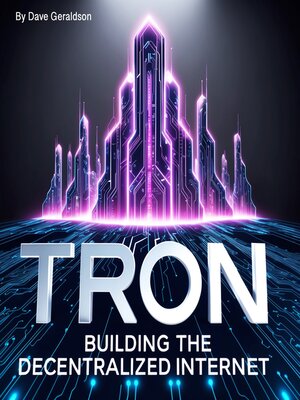
Sign up to save your library
With an OverDrive account, you can save your favorite libraries for at-a-glance information about availability. Find out more about OverDrive accounts.
Find this title in Libby, the library reading app by OverDrive.



Search for a digital library with this title
Title found at these libraries:
| Library Name | Distance |
|---|---|
| Loading... |
This audiobook is narrated by a digital voice.
In the rapidly evolving landscape of blockchain technology during 2017, while most projects focused on incremental improvements to existing cryptocurrency protocols or narrow applications of smart contract technology, a young Chinese entrepreneur named Justin Sun was developing an audacious vision that would attempt to fundamentally restructure the entire internet. His project, TRON, promised nothing less than the complete decentralization of the web, creating a new internet where content creators could interact directly with their audiences without intermediaries, where censorship would be impossible, and where economic value would flow directly to those who created it rather than to platform monopolies that controlled distribution.
Justin Sun's background uniquely positioned him to understand both the potential and the limitations of existing internet infrastructure, having witnessed firsthand how centralized platforms could control and monetize content while providing relatively little value back to creators. As a young entrepreneur who had built successful companies in China's highly competitive and regulated internet sector, Sun understood the power dynamics that allowed a small number of technology giants to extract enormous value from content and data created by billions of users worldwide. His vision for TRON emerged from a conviction that blockchain technology could enable a more equitable and efficient internet where value creation and capture were more directly aligned.
The technical architecture that Sun envisioned for TRON was remarkably ambitious, requiring innovations in blockchain scalability, content storage and distribution, and user experience that would need to match or exceed the performance characteristics of existing internet infrastructure.







